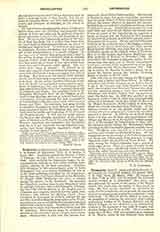

Druillettes (or DREUILLETS), GABRIEL, missionary, b. in France, September 29, 1610; d. at Quebec, April 8, 1681. Druillettes entered the Society of Jesus at Toulouse, July 28, 1629, and went to Canada in 1643. After studying the Algonquin tongue, he accompanied the Indians on their winter hunting expeditions, sharing in all their privations. Parkman calls attention to the extraordinary piety of those Montagnais, who were mostly Christians, as well as to the great sufferings undergone by the missionary. On the same day that Jogues was sent to the Mohawks, August 26, 1646, Druillettes was given a mission among the Abnaki, on the Kennebec. He ascended the Chaudiere, reached what is now Moosehead Lake by portage, and then entered the Kennebec. Continuing down the river he arrived at the English post of Coussinoc, now Augusta, where he met the agent, John Winslow, who became his life-long friend. From Coussinoc he journeyed on until he reached the sea and then travelled along the coast as far as the Penobscot, where he was welcomed by the Capuchins who had established a mission there. Druillettes was the first white man to make this remarkable journey from the St. Lawrence. Retracing his steps, he established a mission on the Kennebec about a league above Coussinoc. Subsequently it grew into the famous Norridgewock, where Father Rasle was slain. He returned to Quebec in June, but as the Capuchins considered that the entire district of Maine was under their jurisdiction, the Jesuits resolved to abandon the mission. In 1648, however, both the Capuchins and Abnaki asked Druillettes to return. But he did not resume his work until 1650, and when he left Quebec the second time it was as envoy of the Government to negotiate a treaty at Boston with the Puritans of New England for commercial purposes, as well as for mutual protection against the Iroquois. He was received with great kindness by the principal men in the English colonies, notably by the famous missionary John Eliot, and by Major-General Gibbons, who kept him at his house. Druillettes speaks in the highest terms of Endicott. Shea is of the opinion that Father Druillettes said Mass privately in Boston, in December, 1650. He returned to the Kennebec in January, and in the following June was again sent as French commissioner to attend a meeting of the representatives of the English colonists at New Haven, September, 1651. Failing to induce the deputies to make a treaty, he resumed his labors among the Abnaki, returning finally to Quebec in March, 1652.
After this date he labored among the Montagnais Indians, and at Sillery and Three Rivers. In 1658 he embarked with Father Garreau on an Indian flotilla to go to the Ottawas near Lake Superior; but the party was attacked near Montreal, Garreau was slain, and the expedition seems to have been abandoned. Druillettes and Father Dablon then attempted to reach the North Sea. In 1660 they paddled up the Saguenay, reached Lake St. John and continued their course up a tributary, which they called the River of the Blessed Sacrament, finally coming to Nekouba, which was twenty-nine days from Tadousac. As the Indians refused to go any farther north and the country offered no prospect of a mission the travellers returned to Quebec. In 1670 he was at Sault Sainte Marie and was one of those who participated with Allouez and Marquette in the famous “taking possession” of the country by Saint-Lusson in May, 1671. He labored chiefly among the Mississauga, besides attending to other dependent missions towards Green Bay. Druillettes was regarded as a man of great sanctity, and miracles are attributed to him. He was remarkable for his knowledge of the Indian languages, and Marquette, before going West, was sent to study Algonquin under his direction at Three Rivers. His work among the Indians extended over a period of thirty-eight years. There is a great diversity in the spelling of his name; Charlevoix writes it Dreuillets. He is also called Droullettes and even Brouillettes.
T. J. CAMPBELL

